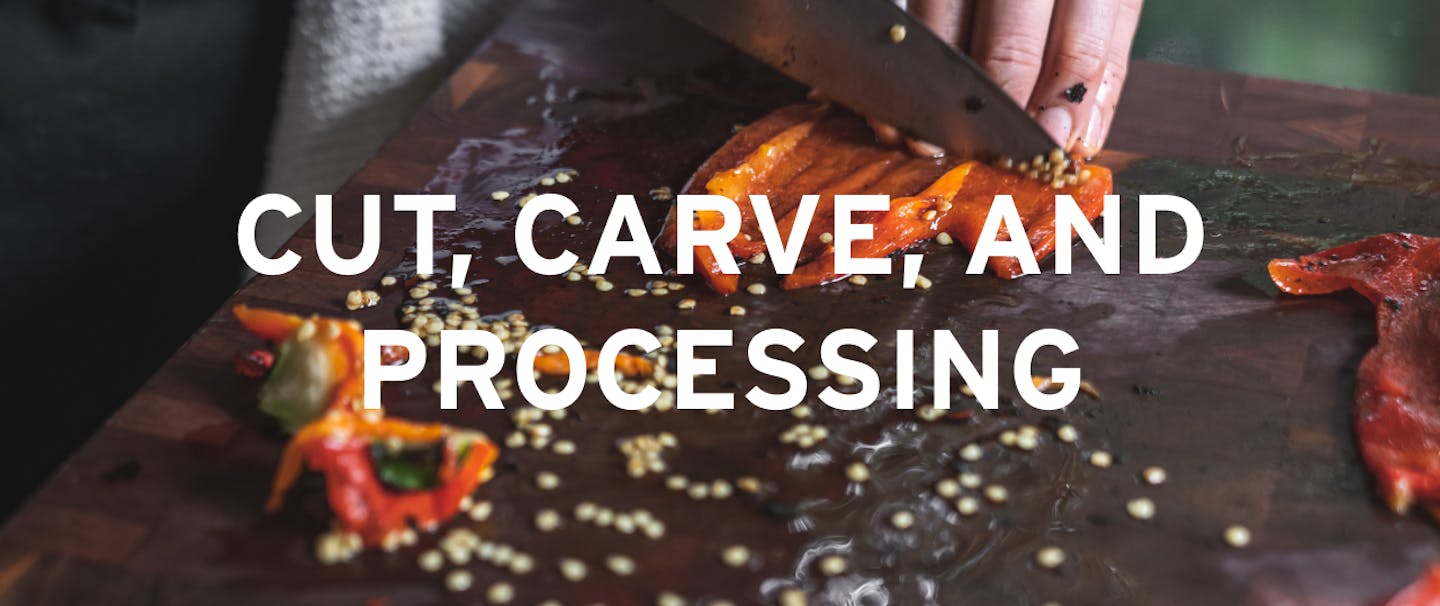There are a few ingredients that every home cook should know how to process. This article and the accompanying video will walk you through processing 6 different common ingredients and share tricks to help along the way.
Roasted Peppers
Roasted peppers are available in most grocery stores. However, the canned or jarred versions don’t hold a candle to fresh roasted peppers. Fresh roasted peppers are much more flavorful and floral than their commercially made counterparts.
1. Char the peppers on all sides over a stovetop gas element until the skin is almost completely black.
2. Placed the charred peppers in a small bowl, wrap with cling film, and set aside for 15 minutes.
3. Peel the peppers to remove the skin. Use a bowl of cold water to wash off the small bits of skin if necessary.
4. Halve each pepper and remove the stems, ribs, and all seeds.
5. Scrape the peppers completely clean with the back of a knife. Rinse again if needed.
Cleaning Morel Mushrooms
These are one of the best mushrooms to pick in the wild, but they can often be dirty and tricky to clean. The key to cleaning mushrooms is using a soft boar bristle brush. These are available online and at kitchen stores. This technique, specifically the brush, is actually great for cleaning any type of mushroom. Refrain from washing mushrooms in water unless it is absolutely necessary.
1. Brush the outside of the morel to remove any loose dirt, pine needles, etc.
2. Trim the bottom of the stem and halve the morel through the poles.
3. Brush the hollow inside of the morel. With morels especially, this hollow interior can sometimes hold small bugs.
Dicing an Onion
This may seem like a simple one, but being able to finely dice an onion for preparations like risotto is crucial. The key to dicing an onion with this method is to use the root end to hold the onion together while slicing.
1. Peel the onion and square up the ends.
2. Halve the onion through the poles.
3. Without cutting through the root, slice the onion vertically to the size of the desired dice.
4. Rotate the onion 90° and slice the onion horizontally, again being sure not to slice through the root.
5. Slice the onion vertically again, perpendicular to the first vertical cut.
6. Once the onion is diced, the root will need to be diced separately.
Cleaning Kale
Working with a single piece of kale at a time allows for more consistent cutting and cooking methods, such as grilling. This technique allows the kale to be cleaned and the leaves to be kept whole during the process.
1. While holding the base of the kale stem in one hand, reach over the stem with the other hand and pinch your thumb and forefinger underneath the stem.
2. Pull your pinched fingers over the kale stem, pulling off the leaf as a whole piece.
3. Where the stem breaks off with the leaf is where the stem is tender enough to eat raw.
4. Wash the kale in cold water and dry.
Carving a Pineapple
As the old expression goes, there’s more than one way to skin a cat. There’s also more than one way to carve a pineapple, but I believe this technique is the cleanest and easiest one out there. It yields 4 clean lobes.
1. Using a large kitchen knife, square up both ends of the pineapple.
2. Stand the pineapple on a cutting board and, following the curvature of the pineapple, remove the skin with the knife.
3. Cut the pineapple through the poles into 4 wedges.
4. Place each wedge on the cutting board with a cut side down and remove the core by cutting downward at a 45° angle. See images.






